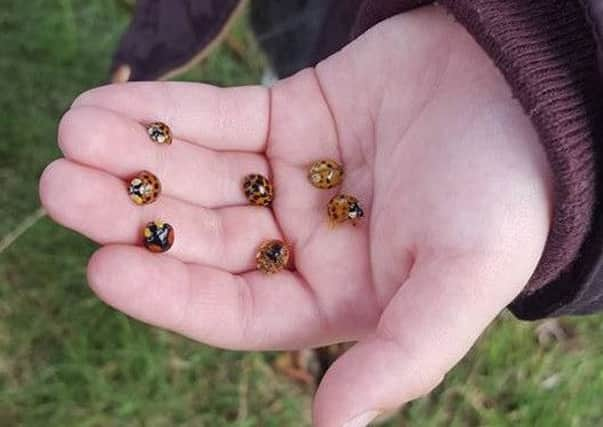Masses of ladybirds reported across Hastings, Bexhill and Rye areas


Residents have recorded strange scenes of large numbers of the bugs climbing over windows, furniture and foliage in gardens.
According to Ecological Contractor for Buglife, Rory Dimond, most of the ladybirds in question are Harlequin ladybirds, an invasive species from Asia.
Advertisement
Hide AdAdvertisement
Hide AdHe said they have spread rapidly across the UK since 2004, after they were introduced to Holland to control aphids.
“The ladybirds pose no danger to humans however, large gatherings can give off a chemical smell and in centrally-heated houses they may be woken up from hibernation by the warmth and fly around the house,” Mr Dimond said.
“Although it is not a native species, they are now so abundant that killing the ladybirds will have next to no impact and we do not advocate spraying them with pesticides.
“It is best to remove the ladybirds humanely if you can using a glass and card.”
Advertisement
Hide AdAdvertisement
Hide AdTiffany Brooks: “Loads all over my washing and in my house in Icklesham.”
We asked our Facebook followers if they had seen large groups of ladybirds.
Julie Rayment wrote: “Had loads in my conservatory yesterday St Leonards.”
Other comments included:
Sammie Sutton: “Had quite a few on my windows yesterday, did think it was strange lol.”
Advertisement
Hide AdAdvertisement
Hide AdSusan Morris: “My sleepy ones in the conservatory were having a party and obviously invited their friends round too! #Rye.”
Edward David Cornford: “We had them in Hawkhurst and there is still the odd one or 2 walking about on our windows.”
Esther Baker: “Yeah loads on the front of my house. St Leonards.”
Maureen Dobson: “Yes got quite a few on my lounge ceiling and all on my deck. Kittens keep bringing, them in in their mouths and dropping them on carpet. I love ladybirds, believe they are lucky not a problem.”
Advertisement
Hide AdAdvertisement
Hide AdHelen Ingham: “Yes we’ve had loads on our windowsills, and when the cats go for them the ladybirds give off a funny smell. They don’t seem to have many spots weirdly, we are in Gunters Lane, Bexhill.”
Lisa King: “Yeah I had hundreds of them on the back of my house and a lot in my kitchen on Wednesday, all different ones mainly the red ones with black spots and black ones with red spots! Not so many yesterday but I had a load, I’ve had to keep all windows closed because I have a bunch of them in my bathroom window frame! Iin Blacklands area.”
Mr Dimond said their influx into houses had become an annual phenomenon.
“As winter is drawing in, the ladybirds are seeking sheltered spots to hibernate away from the cold,” he said.
Advertisement
Hide AdAdvertisement
Hide Ad“They particularly like houses and outbuildings and have a habit of gathering together in suitable areas.”
Although the colour of ladybirds may vary, Mr Dimond said they are all of the same species. If people have spotted Harlequin ladybirds, they can submit a record to the UK ladybird survey to help record the spread of the species across the country: http://www.ladybird-survey.org/
For more information about Harlequin ladybirds visit www.buglife.org.uk/bugs-and-habitats/harlequin-ladybird